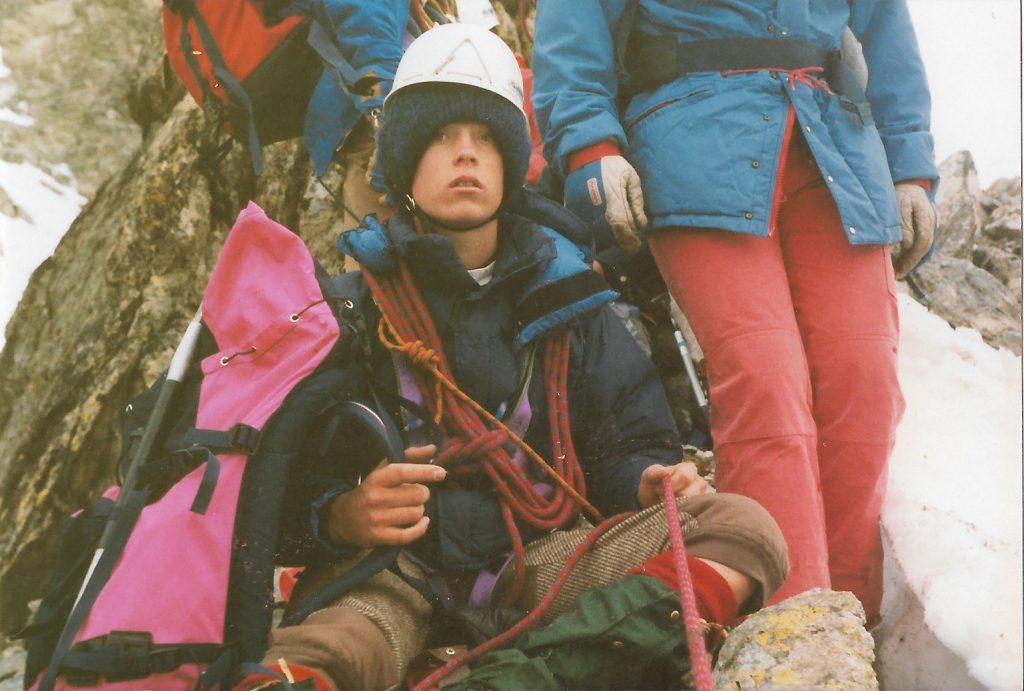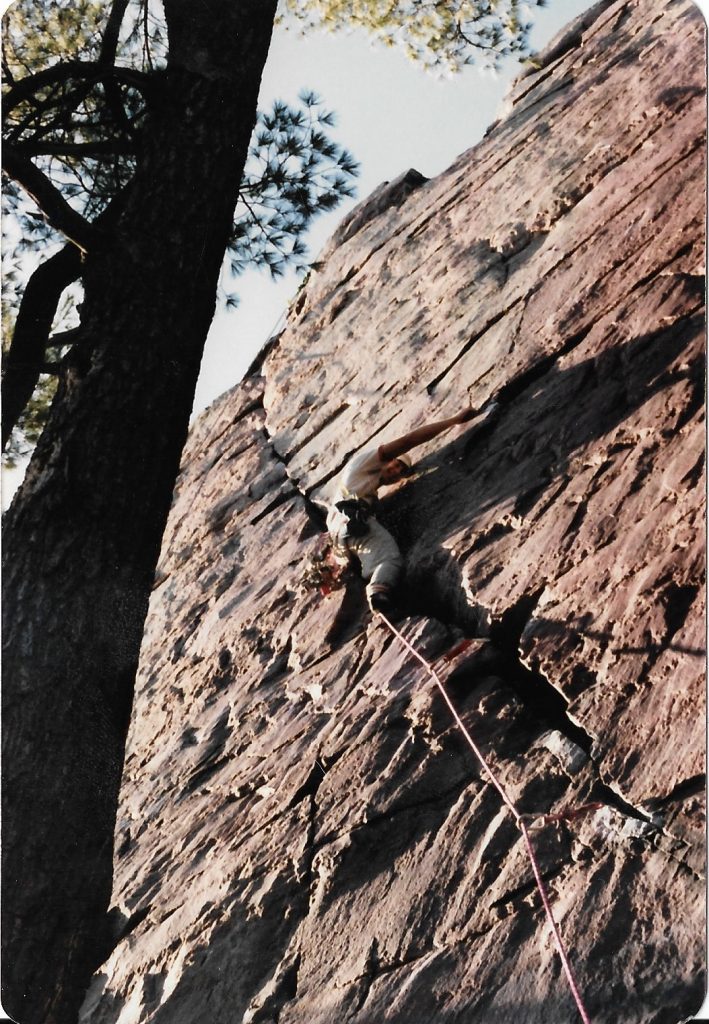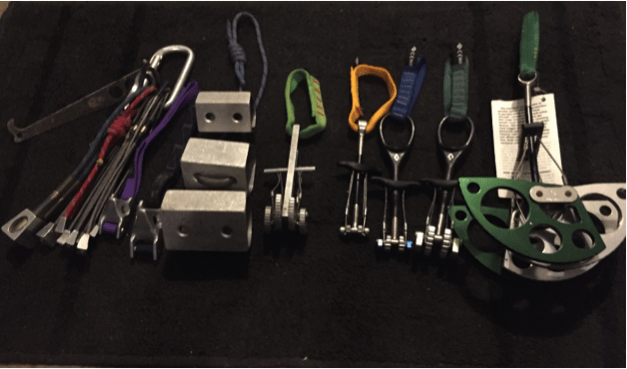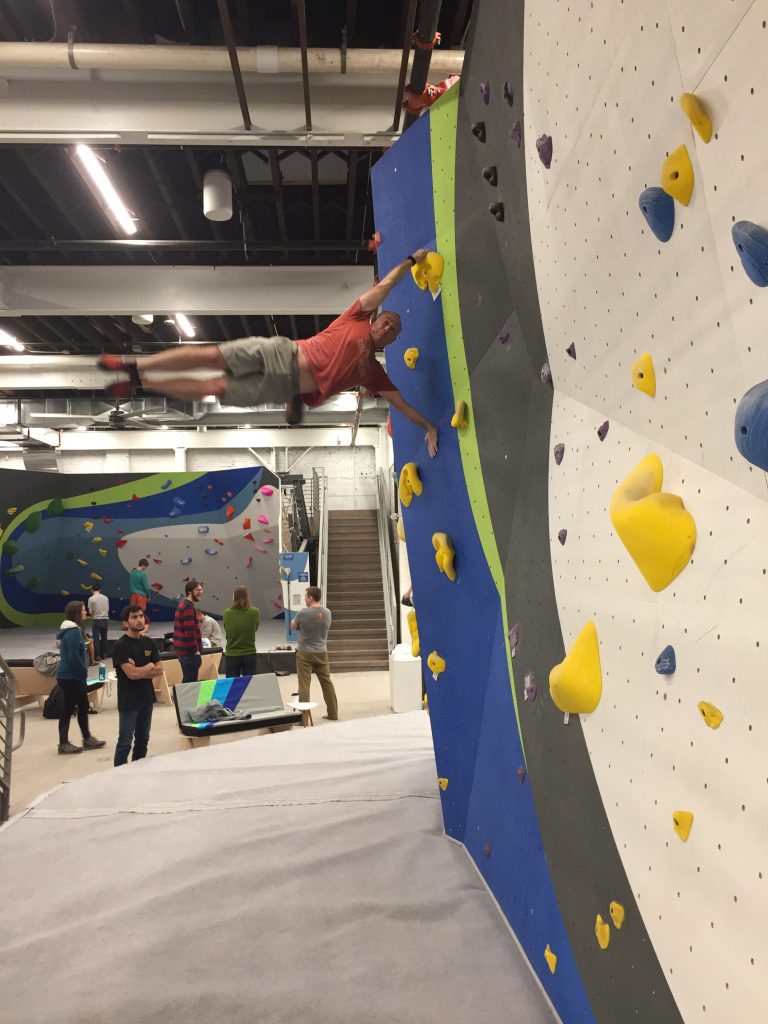First Ascent Peoria has opened, and as I slowly pull myself back into the climbing world, I’ve had my eyes opened to the amazing evolution of climbing standards, technology, and risk management improvements over the last 35 years.
I became interested in climbing in 1985 while attending High School in Urbana, Illinois, the world center of alpine activity (maybe not!). After deciding to attend the University of Wisconsin-Madison, I enrolled in a “Hoofers” outdoor club climbing class that was taught at Devil’s Lake, Wisconsin. From that first class, I knew that climbing was a passion and eventually went on to teach climbing for UW Madison and climbed technical and alpine routes in the US and around the world. In 1990 there was no climbing gym in Madison but I was a “member” of a climbing barn, run by a passionate climber who made all his own holds and fired them in a kiln before bolting them up into 15-foot routes across the roof of an old barn outside of Madison.

At that time (and still today) Devil’s Lake was a “no bolt” site, which meant that you either top-roped or learned to lead climb by placing traditional protection. I did a lot of both. The first thing that hit me as I used a Grigri belay device (for the first time at First Ascent last week) was how far the belay technology has come. Here is a shot of a few of the belay devices I’ve used over the years:

Before buying the Figure 8 (my first piece of gear), I climbed for about 6 months using body belays which were what I read about in the most current edition of Freedom of the Hills in 1984. My conclusion: Grigri’s and other modern belay devices are way better! Managing risk still has to be carefully considered and a constant conscious thought, but the belay technology alone has changed the accessibility of the sport. Properly trained, almost anyone can use a modern belay device properly to protect a climber. It doesn’t require an iron grip, unusual strength, or any special technique beyond performing the basic brake hand function correctly. Following the right belay procedure is critical, but new technology and design has radically improved the whole process.

The next thing that hit me when I walked into the newly opened roped section of Peoria’s First Ascent was the amazing display of top rope routes. The French say “Il pleu des cordes” when it’s raining hard. The direct translation is “it’s raining ropes”, and that’s what you think of when you enter the roped climbing area. It’s raining ropes. There are bolted quickdraws up every route to protect when lead climbing. Learning to lead climb at Devil’s Lake required placing “natural” protection and that technology has also evolved dramatically in the last 35 years. Here is a shot of some natural protection that most climbers have used when climbing outdoors on traditional (non-sport) routes:

The monstrous green thing is a #5 Camelot for use in horrible off-width climbs like the Central Pillar of Frenzy on Cathedral Spire in Yosemite. You only carry that thing when you’re sure you will need it!
My conclusion: bolted routes and quickdraws have changed the game and, in many ways, allowed the sport to become more athletic and more gymnastic while at the same time making it significantly less risky. Whether indoors at your local climbing gym (so excited to say that in Peoria!) or outdoors at the nearest crag, these changes are fantastic for opening up the appeal and accessibility of climbing to young and old. As a side note, if you think all these innovations have somehow reduced the available adventure in the world then I suggest a trip to Devil’s Lake to lead a classic like Upper Diagonal that was rated 5.9 in 1980. It is traditionally protected and adds to the sandbagged rating scale legend that is Devil’s Lake. There is still plenty of adventure to be had!
Thanks so much to the First Ascent team in Peoria. It’s the friendliest group of people you could ever hope to meet. They will teach you what you need to know to manage the risk associated with climbing, and they’ll work hard to make sure everyone has a great time. “Pull Down Hard” and see you at First Ascent.

Saul Boast is a member at First Ascent Peoria.
